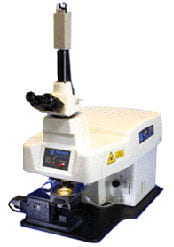The following elemental analysis and imaging equipment is available within QBIC.
To send samples or sign up for training contact QBIC Staff.
If you need Wildcard access to elemental analysis equipment in Silverman Hall B540, you will need to fill out a Silverman Hall Access Form.
 | Thermo iCAP Q Inductively Coupled Plasma Mass Spectrometry (ICP-MS) The Thermo iCAP Q ICP-MS (Installed September 2014) is a quadrupole-based inductively coupled plasma mass spectrometer for the detection of most elements in the ppt-ppb concentration range (0.001 – 1000 ppb). Researchers can be trained in instrument operation, sample preparation, data analysis, and basic troubleshooting for unaccompanied instrument use or samples can be prepared, run, and analyzed by the facility. Uses ~ 3 mL sample/run Features: 1. Equipped with a CETAC ASX260 120-position (15-mL conical tubes) autosampler. 2. Pulse counting and analog detectors for covering a concentration range of up to 9 orders of magnitude. 3. Collision Cell Technology (CCT) to reduce polyatomic interferences for V, Cr, Fe, As, and Se. 4. Computer controlled through fully integrated QTEGRA software. |
 | Thermo iCAP 7600 Inductively Coupled Plasma Optical Emission Spectroscopy (ICP-OES) The Thermo iCAP 7600 ICP-OES (Installed October 2014) is a dual view (Radial and Axial) optical emission spectrometer used for the detection of most elements in the ppb-ppm concentration range (0.001 – 100 ppm). Can handle high matrix and total dissolved solids (TDS) up to 20%. Researchers can be trained in instrument operation, sample preparation, data analysis, and basic troubleshooting for unaccompanied instrument use or samples can be prepared, run, and analyzed by the facility. Uses ~ 5 mL sample/run Features: 1. Axial View – Increased Sensitivity, Lower Matrix Tolerance (0.001 – 1 ppm). 2. Radial View – Decreased Sensitivity, Higher Matrix Tolerance (0.05 – 100 ppm). 3. Equipped with a CETAC ASX520 240-position (15-mL conical tubes) autosampler. 4. Integrated SPRINT Valve with 4-mL sample loop for more efficient sample uptake and washout. 5. Computer controlled through fully integrated QTEGRA software. |
| Agilent 7850 Inductively Coupled Plasma Mass Spectrometry (ICP-MS) The Agilent 7850 ICP-MS (Installed March 2024) uses an Ultra-High-Matrix-Introduction (UHMI) System to allow for the direct analysis of samples with up to 25% total dissolved solids (TDS). Detection of most elements is in the ppt-ppb concentration range (0.001 – 1000 ppb). Researchers can be trained in instrument operation, sample preparation, data analysis, and basic troubleshooting for unaccompanied instrument use or samples can be prepared, run, and analyzed by the facility. Uses ~ 2.5 mL sample/run Features: 1. Equipped with a SPS4 360-position (15-mL conical tubes) autosampler. 2. UHMI system allows high-matrix samples to be analyzed directly without dilution or matrix-matching 3. Helium collision cell and half-mass correction remove troublesome polyatomic and doubly-charged interferences. 4. Computer controlled through fully integrated MassHunter software. |
|
 | CEM Mars 6 Microwave Digestion System The CEM Mars 6 Microwave Digestion System (Installed May 2021) is designed for closed vessel acid digestion for hard to digest samples such as polymers, ceramics, tissues, organs, soils, and sediments. Digestions are carried out in a fraction of the time when compared to heat blocks or other techniques. Vessels are HF compatible. Features: 1. Closed-vessel acid digestion with precise temperature control via infrared sensors (up to 300 °C). 2. SK-10 rotor for high pressure (100 bar) and temperature digestions. 3. Large Throughput: Digest up to 40 samples simultaneously. |
 | ESL BioImage266 Laser Ablation system and TofWerk icpTOFS2 ICP-TOF MS In collaboration with the QBEAM facility at MSU. The laser ablation system (Installed April 2021 at MSU) is interfaced to the ICP-TOF-MS (Installed April 2021 at MSU) for metal detection of ablated solid materials. The LA system uses a deep UV laser to ablate a wide range of materials, from tissue specimens to geological samples, to produce 2D elemental maps. The LA system uses a 213 nm deep UV laser to ablate a wide range of materials, from tissue specimens to geological samples. The aerosol produced is efficiently transported from the LA platform into the ICP-TOF-MS for elemental detection. Visit the Photo Gallery page for more examples of LA-ICP-MS. Features: 1. 2nd generation high-performance Nd:YAG 213 nm deep UV laser. 2. Provides flat craters and high absorption for efficient ablation and transport of materials. 3. Spot sizes down to 10 µm for smaller samples, and up to 100 Hz and 100 µm spot sizes for large samples. |

